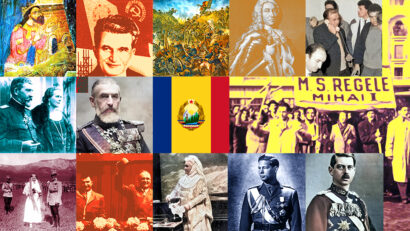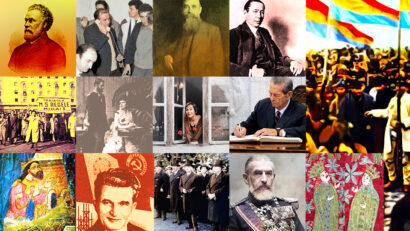The Romanian Revolution
December is the month when, in 1989, the brutal communist dictatorship collapsed

Steliu Lambru, 25.12.2023, 12:42
Every year, the month of December, the last month of the year, usually a month of joy and giving, also has a sensitive public component for Romanians. Because it is the month when, in 1989, the brutal communist dictatorship of Nicolae Ceaușescu was collapsing and freedom and democracy were returning to Romania after almost half a century. Even though 34 years have passed since then, even though extremely diverse opinions about the events of that time and about the communist era have made their way into the public arena, the last two weeks of December 1989 remain a very powerful landmark. For 10 days, between December 16 and 25, 1989, between the outbreak of the protests in Timișoara and the execution of the Ceaușescus, the negative energies of a people forced to live in deprivations of all kinds were unleashed with violence and strong emotion. This is how the history of the last moments of an illegitimate and criminal regime and the history of the first seconds of the return to normality were written.
On December 16, demonstrators from Timișoara, gathered in front of the house of the reformed pastor Laszlo Tokes, opposed the Militia that intended to deport him. In the following days, the protests gained momentum and the repression forces formed by army, militia and security forces, on orders by Ceaușescu personally, opened fire killing several hundred civilians. On December 18, workers from the local enterprises went on an all-out strike. In the center of the city, the revolutionaries cut the communist coat of arms from the tricolor and started singing “Wake up, Romanians!”, an old banned revolutionary song, dating from 1848, the current national anthem of Romania. Also on December 18, after the liquidation of the demonstrations in Timișoara, Ceaușescu, confident in his people and in the obedience of the repression apparatus, left for a visit to Iran. Returning two days later, on December 20, Ceaușescu appeared on television giving a speech in which he condemned the actions of the Timisoara revolutionaries. Together with his clique from the Executive Political Committee, he decided to organize in Bucharest, the next day, a rally in support of himself, and also meant to condemn the people of Timisoara.
Paul Niculescu-Mizil was a communist dignitary and held several very important political positions as well as that of Minister of Internal Trade. He was in Ceaușescus entourage and in the Political Executive Committee in December 1989. After the fall of Ceaușescu, he was tried and sentenced to three years in prison together with other communist dignitaries. Interviewed in 1997 by Radio Romanias Oral History Center, Niculescu-Mizil was asked about the organization of the famous rally on December 21, and who advised Ceaușescu to gather so many people together in moments of maximum tension.
“In 89, no one from the Political Executive Committee could suggest anything to Ceausescu! Who could? The Securitate, the army and maybe one or two of his goons. Otherwise, he did not consult with anyone. I told Ceausescu that the most negative part of him was that he did not consult with the people who called things by their name. I told him: “Comrade Ceauşescu, you surround yourself with people who enter the office, open the door, and although you dont say anything, they say you are right. You should surround yourself with people who come and tell you that you are wrong because those who tell you that you are right will stab you in the back. I told him this many times”.
To the astonishment of Ceaușescu and his wife, the rally on December 21 turned into an open manifestation of the participants hostility towards them. The people booed the dictator and in the evening of the same day the repression of the demonstrators in Bucharest began. The next day, on December 22, the Minister of Defense, General Vasile Milea, committed suicide in his office, a fact that also sealed Ceaușescus fate. Paul Niculescu-Mizil:
“He believed that the Romanian people wanted him, you saw him at the trial as well. And in the morning, at around 7 oclock, the first person who woke up Ceauşescu and reported to him was Milea. General Milea told him that there were dead people at the Intercontinental hotel. And Ceausescu asked him: “Why, Milea? Who gave you the order that they be dead?” I know precisely that, leaving Ceausescus office, Milea went to an adjacent office and called the Ministry of the Armed Forces, his men, and told them that it was bad, Ceausescu was angry because of the dead reported. I am able to say that the theory that Milea shot himself because he was upset about those people being dead is not real. On the contrary. Milea shot himself not because he had killed the demonstrators in front of the Intercontinental hotel, but because Ceausescu blamed him for that.”
The days that followed sealed Ceaușescus downfall. On December 22, 1989, large masses of people from the Bucharest labor platforms marched to the center of the city, to the headquarters of the Communist Party. Ceaușescu escaped by helicopter, but was captured, tried and executed on December 25. The end of the life of a hated ruler also marked the end of an era. (MI)






























